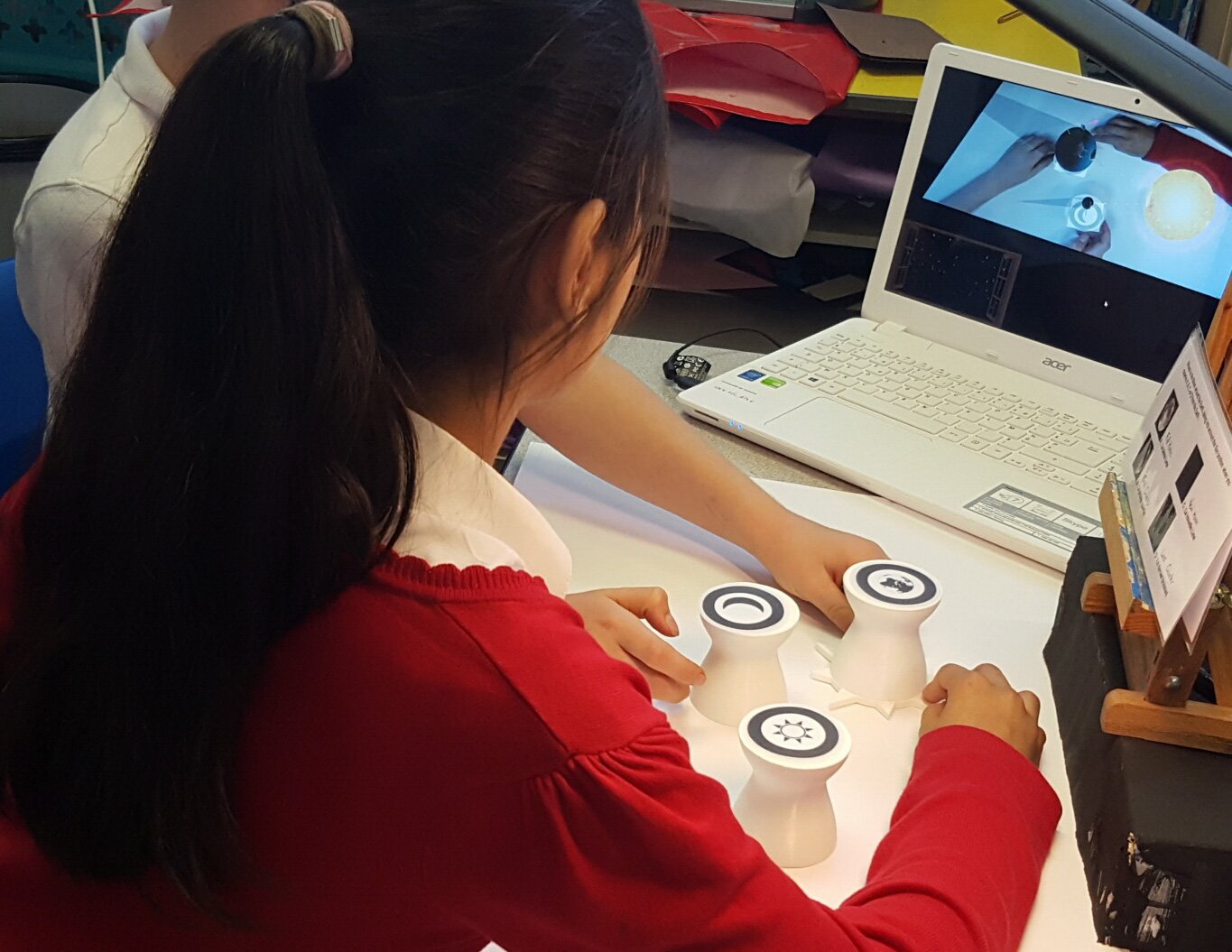Section: New Results
Augmented Reality and Tangible User Interfaces for Understanding Astronomy
Participants: Robin Gourdel, Benoit Coulais, Jeremy Laviole, Martin Hachet
We have worked with Stephanie Fleck (Université de Lorraine) to improve the leraning environment AIBLE she had imagined (see http://stefleck4.wixsite.com/aible/-propos2-cw4c). We have designed Helios, an augmented reality platform that aims at enhancing the understanding of abstract concepts in astronomy, specifically for primary schools’ curriculum with children aged from 8 to 11. In order to provide physical evidence for the influence of sunlight on the Earth and the Moon, and of the consequences of their relative positions, the learning tasks are designed on inquiry-based learning principles. Children have to test their own hypotheses by using tangible props and a set of cards that trigger dedicated pedagogical activities (e.g. seasons and the Earth revolution around the Sun, lunation origin, Earth rotation and time measurement).
Helios basically consists of a standard laptop computer, a webcam, printable AR markers placed on tangible props and on dedicated pedagogical cards (See Figure 6). The (virtual) celestial bodies are displayed on the screen, and many visual feedback help understanding various phenomena (e.g. shadow cones, time zones, and so on). In [13], we discuss how such an approach allows learners to better understand abstract phenomena.


